 back to top
back to top
Disclaimer: The views and opinions expressed are solely representative of the contributors, and are not necessarily condoned or supported by the University of Southampton and/or the National Oceanography Centre Southampton.
The phytoplankton community is dominated by Chaetoceros, which account for about
50% of total abundance. This is a predictable result as diatoms bloom in spring months
when the water column is well-
Figure 1: Total phytoplankton abundance as percentage across all 7 stations
Figure 2: Phytoplankton abundance as percentage at Station 2
Figure 3: Phytoplankton abundance as percentage at Station 5
Figure 4: Phytoplankton abundance as percentage at Station 7.
ZOOPLANKTON
Figure 5: Total zooplankton abundance as percentage across stations 1, 4 and 7.
The zooplankton community is dominated by Copepoda nauplii and Copepoda. This could be because they are temperature dependant, hence why there are so many at the surface. The recent warm air temperatures could also be leading to a slightly earlier population peak in July. They are very motile within the viscous layers they live in, this is because they are small and live in a low Reynolds number environment. They are also capable of a “burst” movement, their motility is key to their success as planktivorous zooplankton (Mallin, 1991).
PHYTOPLANKTON
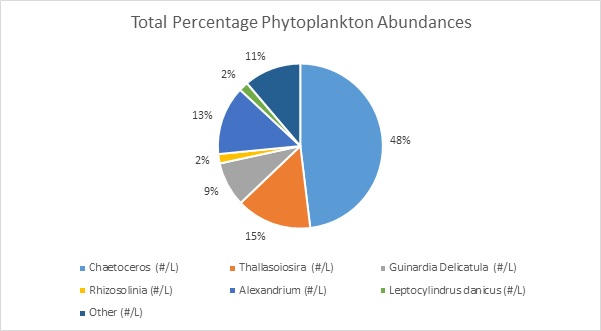
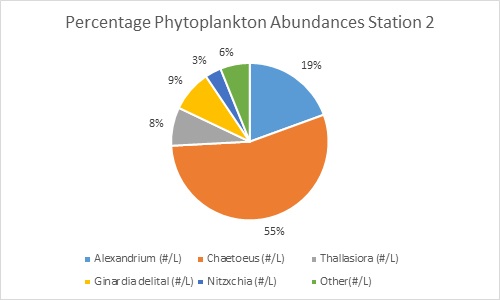
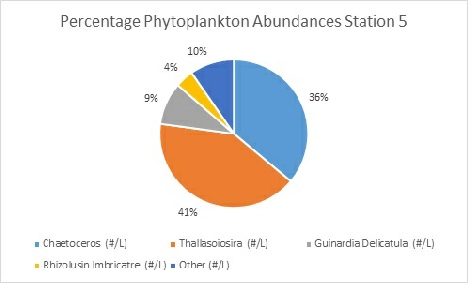
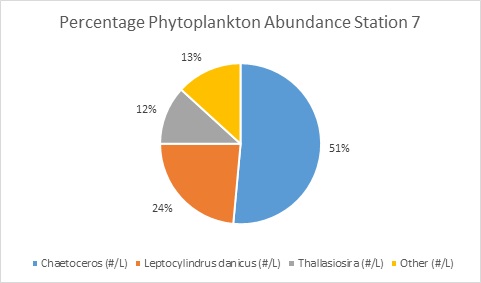
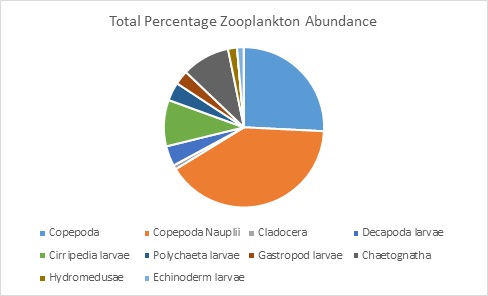
References
Mallin, M., 1991. Zooplankton Community Structure and Abundance in a Mesohaline North
Carolina Estuary. Estuaries, 14(4), pp. 481-
Perez-
Widdecombe, C. et al., 2010. Long-